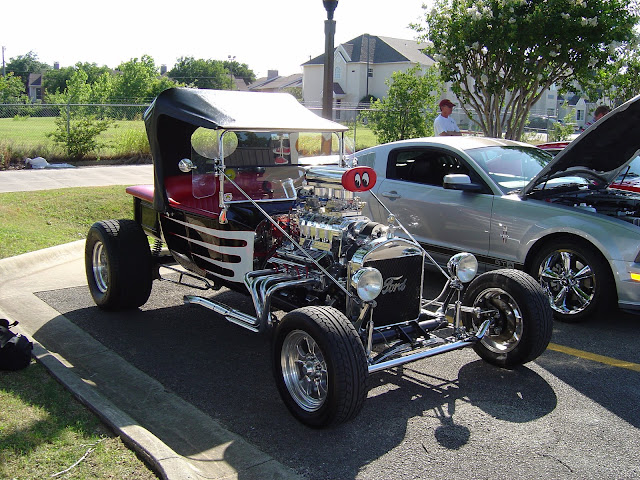Questions for you blower guys.
What psi of radiator cap are you using? I ask because every now and then, when I kill the motor after driving about 10 miles or so, it spits out about 8-12 oz of water from the overflow tank. It runs at about 185 when cruising down the road and each time it's puked water, it wasn't over 200. It doesn't do it all the time either. I'm pretty sure the cap is a 15 psi. At first I thought it was an air pocket, so I removed the cap after letting it warm up, then started it to see if it would burp and it never did. It's possible I just over filled the radiator, so I'll keep my eye on it.
Also is your temp sender in the back of manifold or is it up front? Which one is more accurate? I have mine in the rear.
I'm still working out the bugs, but so far she's running good with the Edelbrocks. I checked the #1 and #8 plugs after about 30 miles of driving and they were both a nice tannish brown color.

What psi of radiator cap are you using? I ask because every now and then, when I kill the motor after driving about 10 miles or so, it spits out about 8-12 oz of water from the overflow tank. It runs at about 185 when cruising down the road and each time it's puked water, it wasn't over 200. It doesn't do it all the time either. I'm pretty sure the cap is a 15 psi. At first I thought it was an air pocket, so I removed the cap after letting it warm up, then started it to see if it would burp and it never did. It's possible I just over filled the radiator, so I'll keep my eye on it.
Also is your temp sender in the back of manifold or is it up front? Which one is more accurate? I have mine in the rear.
I'm still working out the bugs, but so far she's running good with the Edelbrocks. I checked the #1 and #8 plugs after about 30 miles of driving and they were both a nice tannish brown color.




